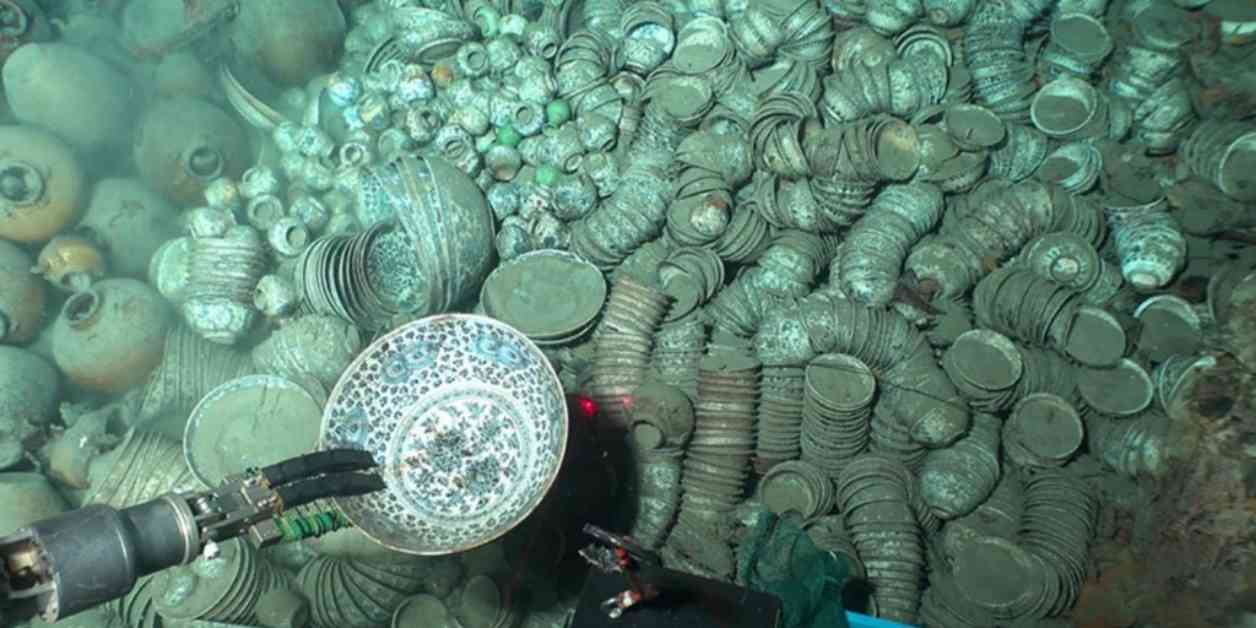Nearly 1,000 cultural relics have been recovered from shipwrecks dating back to the Ming Dynasty, which lasted from 1368 to 1644. These relics include porcelain and pottery, copper coins, and deer antlers, according to a release from China’s National Cultural Heritage Administration (NCHA). The underwater excavation of these shipwrecks began last year and provides insight into how people from the Ming Dynasty utilized the South China Sea as a crucial trade route, as stated by Guan Qiang, the deputy head of the NCHA.
The wrecks, located roughly 5,000 feet below the surface near the northwest continental slope of the South China Sea, were first discovered in 2022. A total of 890 relics, such as coins, pottery, and porcelain, were found in the first shipwreck, while 38 items including pottery, porcelain, turban shells, and lumber were excavated from the second wreck. The manned Deep Sea Warrior submersible was utilized by excavators to retrieve these items from the shipwrecks.
The first ship appeared to have primarily exported porcelain, while the second was involved in importing wood. Interestingly, the ships were found 10 nautical miles apart, suggesting they might have been part of the same trading route. The well-preserved relics found are considered to have high historical, scientific, and artistic value, potentially making this a significant deep-sea archaeological discovery, according to Yan Yalin, the archaeological director of China’s State Administration of Cultural Heritage.
Upon initial assessment, the cultural relics found in the water after the ships were discovered are believed to be from the Zhengde period of the Ming Dynasty, which spanned from 1506 to 1521. In addition to the various artifacts, numerous logs were discovered on one of the ships, neatly stacked and of similar size, with some items possibly dating back to the reign of Emperor Hongzhi from 1488 to 1505.
This discovery marks the first time that ancient ships traveling to and from the same sea area have been found in China. The excavation of these shipwrecks is linked to China’s territorial claims in the South China Sea, particularly through its “nine-dash-line” policy, which has faced international disputes in court. By shedding light on the historical use of this maritime region, these findings contribute to a better understanding of the Ming Dynasty’s trading activities and connections with distant lands.
In conclusion, the recovery of these cultural relics from centuries-old shipwrecks offers valuable insights into ancient maritime trade routes and practices, further enriching our knowledge of the Ming Dynasty’s seafaring activities. The meticulous excavation process and the significance of the artifacts found underscore the historical, scientific, and artistic importance of this deep-sea archaeological discovery.




